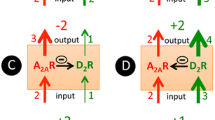Abstract
Aggregation during morphine abstinence elicited social aggression (rearing, vocalization, attack-bites) in the morphine dependent rats. Pretreatment with l-dihydroxyphenylalanine (50 mg/kg), dl-dihydroxyphenylalanine (200 mg/ kg), dextro-amphetamine sulfate (2 mg/kg) or apomorphine hydrochloride (1.25 mg/kg) enhanced that aggression severalfold. Alpha methyl-p-tyrosine (200 mg/kg) abolished the morphine withdrawal aggression that was elicited either by mere aggregation or by aggregation combined with amphetamine. However, alpha methyl-p-tyrosine did not block the aggression in apomorphine treated rats. Haloperidol (0.63–2.5 mg/kg) also blocked the aggression due to mere abstinence or abstinence supersensitized by amphetamine. Similarly, methadone hydrochloride (5–20 mg/kg) blocked morphine withdrawal aggression supersensitized by apomorphine. These data are interpreted to suggest dopaminergic basis of morphine withdrawal aggression and a latent supersensitivity of dopaminergic neuropathways during morphine dependence.
Similar content being viewed by others
References
Anden, N. E., Butcher, S. G., Carrodi, H., Fuxe, K., Ungerstedt, V.: Receptor activity and turnover of dopamine and noradrenaline after neuroleptics. Europ. J. Pharmacol. 11, 303–314 (1970)
Anden, N. E., Rubenson, A., Fuxe, K., Hokfet, T.: Evidence for dopamine receptor stimulation by apomorphine. J. Pharm. Pharmacol. 19, 627–629 (1967)
Boshka, S. E., Weisman, M. C., Thor, D. H.: A technique for inducing aggression in rats utilizing morphine withdrawal. Psychol. Rec. 16, 541–543 (1966)
Carlsson, A.: Basic concepts underlying recent development in the field of Parkinson's disease. In: Recent advances in Parkinson's disease. Eds. McDowell and Markam, pp. 1–31. Philadelphia: Davis 1971
Davis, W. M., Smith, G. G.: Effect of α-methyltyrosine on morphine based reinforcement. Amer. Psychol. Assoc. (Abs.)
Ernst, A. M.: Mode of action of apomorphine and dextroamphetamine on gnawing compulsion of rats. Psychopharmacologia (Berl.) 10, 316–323 (1967)
Glowinski, J., Baldessarini, R.: Metabolism of norepinephrine in the central nervous system. Pharmacol. Rev. 18, 1201–1238 (1966)
Hanson, H. M., Cimini-Venema, C. A.: Effects of haloperidol on self-administration of morphine in rats. Fed. Proc. 31, 503 Abs. (1972)
Janssen, P. A. J.: The pharmacology of haloperidol. Int. J. Neuropsychiat. 3, 510–518 (1967)
Karkalas, Y. and Lal, H.: Haloperidol in the treatment of opioid addiction. In: Drug addiction, Vol. 2. Clinical and socio-legal aspects. Eds. Singh, Miller and Lal, pp. 251–256. New York: Futura Publishing Co. 1972
Karkalas, Y., Lal, H.: A comparison of haloperidol with methadone in blocking heroin-withdrawal symptoms. Internat. Pharmacopsychiat. (in press) (1973)
Lal, H., Nesson, B., Smith, N.: Amphetamine-induced aggression in mice pretreated with dihydroxyphenylalanine (dopa) and/or reserpine. Biol. Psychiat. 2, 299–301 (1970)
Lal, H., O'Brien, J., Puri, S.: Morphine withdrawal aggression: sensitization by amphetamine. Psychopharmacologia (Berl.) 22, 217–223 (1971)
Lal, H., O'Brien, J., Pitterman, A., Gianutsos, G., Reddy, C.: Aggression after ampetamine (AMP) and dihydroxyphenylalanine (dopa). Fed. Proc. 31 (2) 529 Abs. (1972)
Lal, H., Puri, S. K.: Morphine withdrawal aggression: Role of dopaminergic stimulation. In: Drug addution, Vol. 1. Experimental pharmacol. Eds. Singh, Miller and Lal, pp. 301–310. New York: Futura Publishing Co. 1972
McKenzie, G. M.: Apomorphine induced aggression in the rat. Brain Res. 34, 323–330 (1971)
Neff, N. H., Costa, E.: The influence of monoamine oxidase inhibition on catecholamine synthesis. Life Sci. (1) 5, 951–959 (1966)
Pozuelo, J., Kerr, F. W.: Suppression of craving and other signs of dependence in morphine addicted monkeys by administration of alpha-methyl-p-tyrosine. Proc. Mayo Clin. 41, 621–628 (1972)
Randrup, A., Munkvad, I.: Relation of brain catecholamines to aggressiveness and other forms of behavioral excitation. Aggressive behavior, pp. 228–235. Eds. Garattini and Sigg. New York: John Wiley 1969
Sasame, H. A., Perez-Cruet, J., DiChiara, G., Tagliamonte, A., Tagliamonte, P., Gessa, G. L.: Evidence that methadone blocks dopamine receptors in the brain. J. Neurochem. 19, 1953–1957 (1972)
Seevers, M. H., Deneau, G. A.: Physiological aspects of tolerance and physical dependence. In: Physiological pharmacol, Vol. 1. Eds. Root and Hofmann, pp. 565–640. New York: Academic Press 1963
Singh, M., Lowinson, J. H., Langrod, J., Lal, H.: Problem of narcotic addiction—innovate approaches for study and treatment. Second International Symposium on “Drug Addiction” held on March 7–9, 1973
Spector, S., Sjoedesma, A., Udenfriend, A.: Blockade of endogenous norepinephrine synthesis by α-methyl-p-tyrosine, an inhibitor of tyrosine hydroxylase. J. Pharmacol. exp. Ther. 147, 86–95 (1965)
Taylor, K. M., Snyder, S. H.: Amphetamine: Differentiation by d and l isomers of behavior involving brain norepinephrine or dopamine. Science 168, 1487 to 1489 (1970)
Thor, D. H.: Chemical induction of traumatic fighting behavior. Proc. Amer. Psychol. Ass., Part II, 883–884 (1969)
Van Rossum, J. M.: The significance of dopamine-receptor blockade for the mechanisms of action of neuroleptics drugs. Arch. int. Pharmacodyn. Ther. 160, 492–494 (1967)
Author information
Authors and Affiliations
Rights and permissions
About this article
Cite this article
Puri, S.K., Lal, H. Effect of dopaminergic stimulation or blockade on morphine-withdrawal aggression. Psychopharmacologia 32, 113–120 (1973). https://doi.org/10.1007/BF00428682
Received:
Issue Date:
DOI: https://doi.org/10.1007/BF00428682




